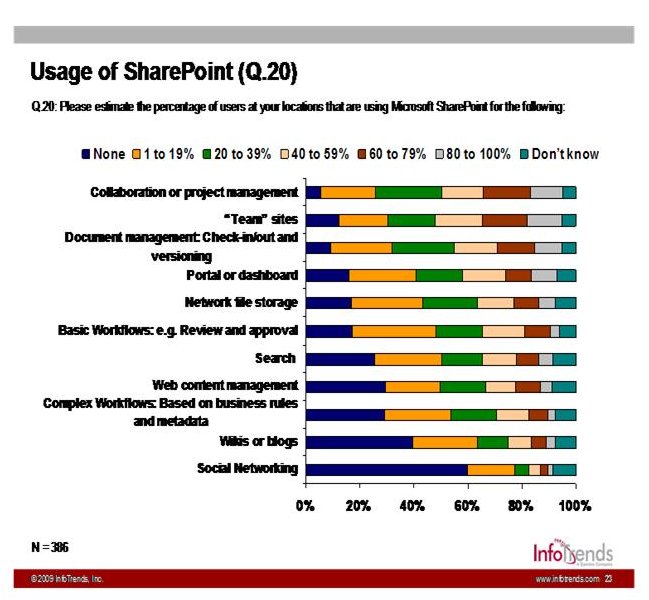SharePoint Statistics: The Real Reason Behind SharePoint's Price Tag

What would you say is the most expensive part of a SharePoint deployment? A recent study by InfoTrends, a consultancy, identified where the money is being spent on SharePoint and where it's not. The results may surprise you.
So I was speaking the other day with Omri Duek, a consultant for InfoTrend. He knows a lot about a lot of things, but the thing he knows really well is SharePoint. No surprise there, I suppose. Duek is the author of the report "Gathering MOSS? Revealing SharePoint Opportunities and Costs" by InfoTrends, Inc. He shared a number of statistics with me about SharePoint usage, Pretty eye-popping, if you ask me.
Of 1,680 IT and end-users they surveyed, over a third indicated that their organization used SharePoint 2007 today; over half of the largest companies (10,000+ employees) indicated SharePoint 2007 use. These rates beat ALL of the other document and content platforms listed – EMC, IBM, Open Text, Oracle, Hyland, et al. A few more numbers to mull over:
- (N=367) On average, SharePoint is available to approximately two-thirds of organizations (that have it) but only used by approximately 40% with access.
- Approx. two-thirds of active users (N=270) were interacting with the platform AT LEAST 1-2x per day.
- (N=386) On average, 24.7% of SharePoint sites are currently inactive or not in regular use. The largest companies are creating over 100 new sites per month, on average, and already have over 400 sites to manage.
- SharePoint use varies substantially across and within company size segments (often based on existing investments or policies), but virtually ALL of our follow-up phone interviews indicated basic collaboration and document management as the primary use. The phrases “e-mail replacement” or “shared drive replacement” came up often during these calls. Where more advanced workflows or WCM were used, they were underwhelming.

- (N=367) SharePoint Server licenses and user CALs represent only about 1/3 of deployment costs – other major costs were servers and storage, deployment/assessment services, development/maintenance services, i/o hardware (e.g. scanners, MFPs), and additional software.
- (N=386) Top 2 investment priorities moving forward, which are indicative of SharePoint’s relative immaturity today:
- Extending capabilities to additional departments or divisions - 44.6%
- Establishing a strategy for SharePoint – 40.9%